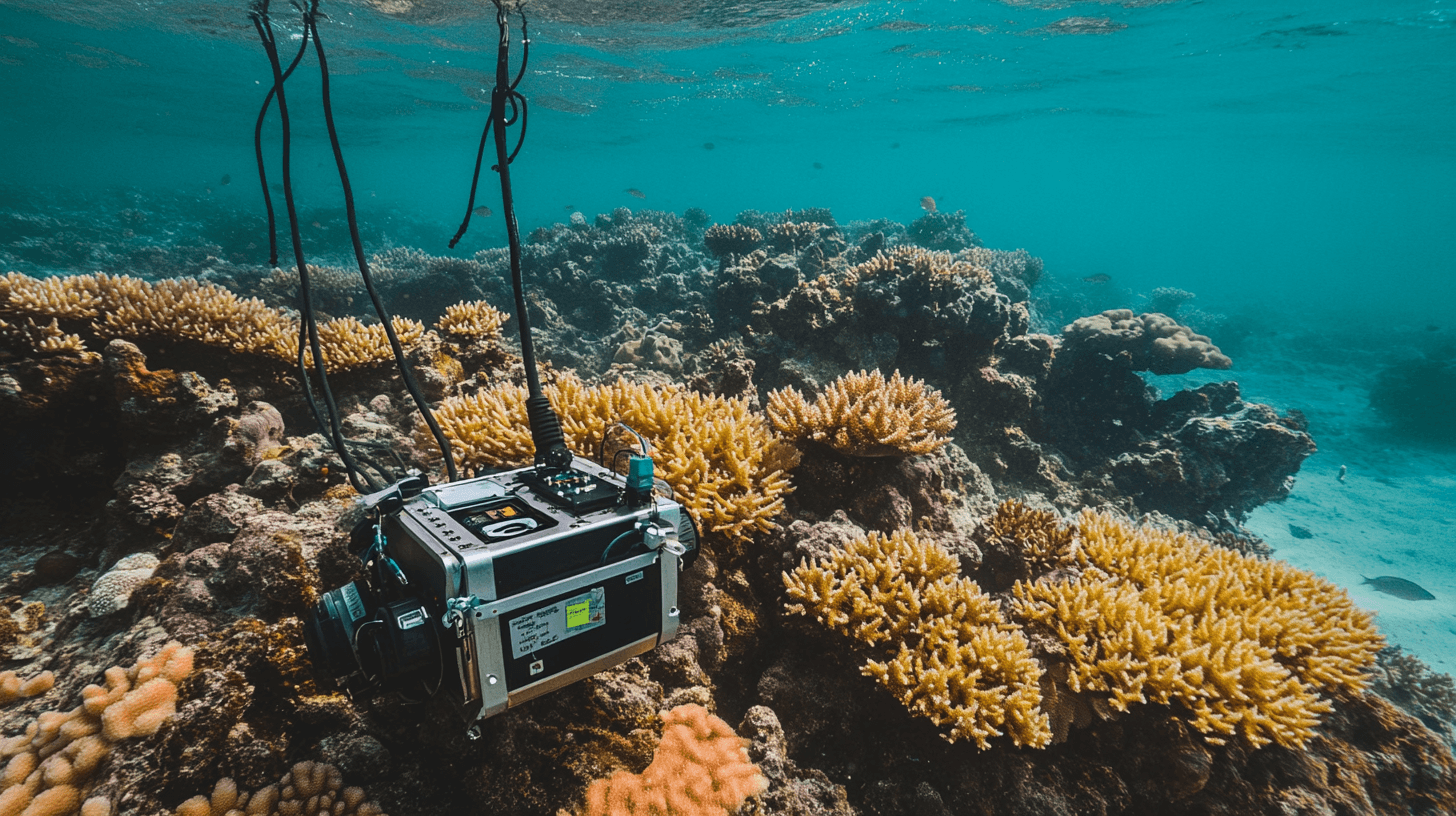
Fiber Optics in Oceanography: Illuminating the Depths of Our Oceans
In the vast expanse of our planet's oceans, which cover more than 70% of the Earth's surface, lies a world of mystery, wonder, and crucial importance to our global ecosystem. Oceanography, the science of studying these marine environments, has never been more critical as we face challenges such as climate change, overfishing, and pollution. But how do we gain insights into the depths that have remained largely unexplored and inaccessible to humans?
Enter the realm of fiber optics – a technology that's revolutionizing not just our internet connections on land, but also our ability to probe the ocean's secrets. At Fiberoptic Systems Inc. (FSI), we've been at the forefront of fiber optic innovation since 1982, and we're excited to share how this remarkable technology is transforming oceanographic research and monitoring.

How Fiber Optics Work in Oceanographic Applications
To understand the revolutionary impact of fiber optics in oceanography, it's essential to grasp the basics of this technology and how it's adapted for the challenging underwater environment.
The Basics of Fiber Optic Technology
At its core, fiber optic technology relies on the transmission of light through thin strands of glass or plastic. These strands, known as optical fibers, consist of three main parts:
The core: The central part where light travels
The cladding: A layer surrounding the core that reflects light back into it
The coating: An outer protective layer
Light signals travel through the core by bouncing off the cladding in a process called total internal reflection. This allows data to be transmitted over long distances with minimal loss of signal strength.
For a more detailed explanation of how fiber optics work, check out our comprehensive guide on how fiber optic cables transmit information quickly over long distances.
Adapting Fiber Optics for Underwater Use
Deploying fiber optics in the ocean presents unique challenges that require specialized adaptations:
Pressure-resistant cabling: Ocean depths can reach pressures hundreds of times greater than at the surface. Underwater fiber optic cables are designed with multiple layers of protection to withstand these extreme conditions.
Waterproof sealing: Every connection point and junction in underwater fiber optic systems must be meticulously sealed to prevent water ingress, which could damage the fibers or disrupt data transmission.
Corrosion resistance: Marine environments are highly corrosive due to salt water. Underwater fiber optic cables use corrosion-resistant materials in their outer layers to ensure longevity.
Flexible yet durable design: Ocean currents and marine life can put stress on underwater cables. The design must be flexible enough to move with currents but durable enough to resist damage.
Repeaters and amplifiers: For long-distance underwater applications, special repeaters and amplifiers are placed at intervals to boost the optical signal, ensuring data integrity over vast oceanic expanses.
At FSI, we've developed specialized fiber optic products that meet these rigorous requirements for underwater use. Our advanced manufacturing techniques and high-quality materials ensure that our fiber optic solutions can withstand the harsh conditions of the marine environment while delivering reliable, high-speed data transmission.

Specific Uses of Fiber Optics in Oceanography
Fiber optic technology has found numerous applications in oceanography, revolutionizing how we study and monitor our oceans. Here are some of the key areas where fiber optics are making a significant impact:
1. Underwater Communication Systems
Fiber optics have dramatically improved underwater communication capabilities:
Submarine Communication Cables: Vast networks of fiber optic cables crisscross the ocean floor, forming the backbone of global internet communications. These cables can transmit terabits of data per second, enabling real-time communication across continents.
Scientific Research Networks: Dedicated fiber optic networks connect research vessels, underwater observatories, and onshore facilities, allowing for real-time data sharing and collaborative research.
2. Seafloor Observatories
Permanent seafloor observatories use fiber optic cables to transmit data continuously from the ocean depths:
NEPTUNE Observatory: Off the coast of Canada, this network of instruments connected by 800 km of fiber optic cable provides real-time data on ocean processes, plate tectonics, and marine ecosystems.
European Multidisciplinary Seafloor and water column Observatory (EMSO): This network of observatories across European seas uses fiber optics to study geohazards, climate change, and marine ecosystems.

3. Tsunami Detection and Warning Systems
Fiber optic systems play a crucial role in early warning systems for tsunamis:
DART (Deep-ocean Assessment and Reporting of Tsunamis) Buoys: These buoys use fiber optic cables to transmit data from seafloor pressure sensors to surface buoys and then to satellite systems, providing rapid tsunami detection and warning.
S-net (Seafloor Observation Network for Earthquakes and Tsunamis): This Japanese system uses over 5,000 km of fiber optic cable to connect 150 observatories, monitoring seismic activity and potential tsunamis in real-time.
4. Marine Ecosystem Monitoring
Fiber optics enable long-term, continuous monitoring of marine ecosystems:
Coral Reef Monitoring: Fiber optic networks support high-resolution cameras and sensors that monitor coral reef health, temperature changes, and biodiversity in real-time.
Ocean Acidification Studies: Fiber optic-connected pH sensors provide continuous data on ocean acidification, helping scientists understand its impact on marine life.
5. Underwater Imaging and Mapping
High-bandwidth fiber optic connections support advanced underwater imaging technologies:
ROV (Remotely Operated Vehicle) Operations: Fiber optic tethers allow ROVs to transmit high-definition video and sensor data in real-time, enabling detailed exploration of deep-sea environments.
Seafloor Mapping: Fiber optic networks support the transmission of high-resolution sonar data, allowing for detailed mapping of the ocean floor.
Advantages of Fiber Optics in Marine Environments
Fiber optic technology offers several unique advantages that make it particularly well-suited for use in marine environments. These benefits have propelled fiber optics to the forefront of oceanographic research and monitoring tools:
High Bandwidth and Data Transmission Speeds: Fiber optic cables can transmit vast amounts of data at incredible speeds, crucial for applications like real-time video streaming from underwater cameras or transmitting large datasets from multiple sensors simultaneously.
Resistance to Electromagnetic Interference: Unlike traditional copper cables, fiber optics are immune to electromagnetic interference, ensuring data integrity in marine environments where electrical equipment, lightning strikes, or even the Earth's magnetic field can interfere with data transmission.
Durability in Harsh Underwater Conditions: Specially designed underwater fiber optic cables can withstand extreme pressures, corrosive salt water, and a wide range of temperatures, making them ideal for long-term deployment in challenging ocean environments.
Long-Distance Capabilities: Fiber optic signals can travel long distances with minimal loss of strength, allowing for the creation of vast underwater observation networks spanning hundreds or even thousands of kilometers.
Scalability and Future-Proofing: Once fiber optic cables are laid, the end-point equipment can be upgraded to increase data capacity without needing to replace the entire cable, ensuring these networks can support future oceanographic technologies and instruments as they are developed.
For more on the impressive capabilities of fiber optic technology, check out our article on how fast fiber optic internet is.
The Future of Fiber Optics in Oceanography
As technology continues to advance, the future of fiber optics in oceanography looks increasingly bright. Here are some exciting developments and potential applications on the horizon:
1. Integration with Artificial Intelligence and Machine Learning
The vast amounts of data collected through fiber optic networks can be analyzed in real-time using AI and machine learning algorithms. This could lead to:
Improved prediction models for climate change impacts on marine ecosystems
Automated detection and tracking of marine species
Real-time analysis of ocean chemistry and pollution levels
2. Expansion of Global Underwater Observation Networks
The success of existing seafloor observatories is driving plans for even more extensive networks:
A proposed "Ocean Internet of Things" could connect millions of sensors across the world's oceans, providing unprecedented global coverage for oceanographic research and monitoring.
Initiatives like the Deep Ocean Observing Strategy (DOOS) aim to expand our observational capabilities to the deepest parts of the ocean.
3. Advanced Underwater Robotics
Fiber optic tethers will enable the next generation of underwater robotics:
Swarms of interconnected autonomous underwater vehicles (AUVs) could work together to explore and map vast areas of the ocean floor.
Highly maneuverable, fiber-optic-controlled robots could perform delicate tasks in deep-sea environments, such as collecting biological samples or repairing underwater infrastructure.
4. Quantum Communication in the Ocean
As quantum communication technology develops, underwater fiber optic networks could play a crucial role:
Quantum key distribution through fiber optics could provide ultra-secure communication channels for sensitive oceanographic data.
Quantum sensors connected via fiber optic networks might offer unprecedented precision in measuring various ocean parameters.
5. Environmental Conservation and Climate Change Mitigation
Expanded fiber optic networks in the oceans will be instrumental in our efforts to understand and mitigate climate change:
High-resolution, real-time monitoring of ocean temperatures, currents, and chemistry will improve our climate models and predictions.
Fiber optic networks could support large-scale carbon capture and storage projects in the ocean, providing crucial monitoring capabilities.
At FSI, we're excited to be at the forefront of these developments, continually innovating our fiber optic solutions to meet the evolving needs of oceanographic research and monitoring.
Conclusion: Illuminating the Future of Ocean Science
As we've explored in this article, fiber optic technology is truly illuminating the depths of our oceans, revolutionizing the field of oceanography. From enabling real-time communication across vast underwater distances to supporting intricate networks of sensors and observatories, fiber optics are providing oceanographers with unprecedented access to the marine environment.
The advantages of fiber optics – high bandwidth, resistance to interference, durability in harsh conditions, and long-distance capabilities – make it an ideal technology for marine applications. As we look to the future, the integration of fiber optics with emerging technologies like AI, advanced robotics, and quantum communication promises to unlock even more potential for ocean exploration and monitoring.
At Fiberoptic Systems Inc., we're proud to play a role in this exciting field, providing cutting-edge fiber optic solutions that enable scientists to push the boundaries of ocean research. As we continue to innovate and develop new technologies, we're committed to supporting the crucial work of oceanographers around the world.
The oceans play a vital role in our planet's health, and understanding them is more important than ever as we face global challenges like climate change. With fiber optics lighting the way, we're entering a new era of ocean exploration and discovery. The future of oceanography is bright, and it's illuminated by the power of light transmitted through glass fibers thinner than a human hair.
Interested in learning more about how fiber optics can support your oceanographic research or marine monitoring projects? Explore our range of custom fiber optic solutions or contact our team of experts to discuss how we can help illuminate your work in marine science.



